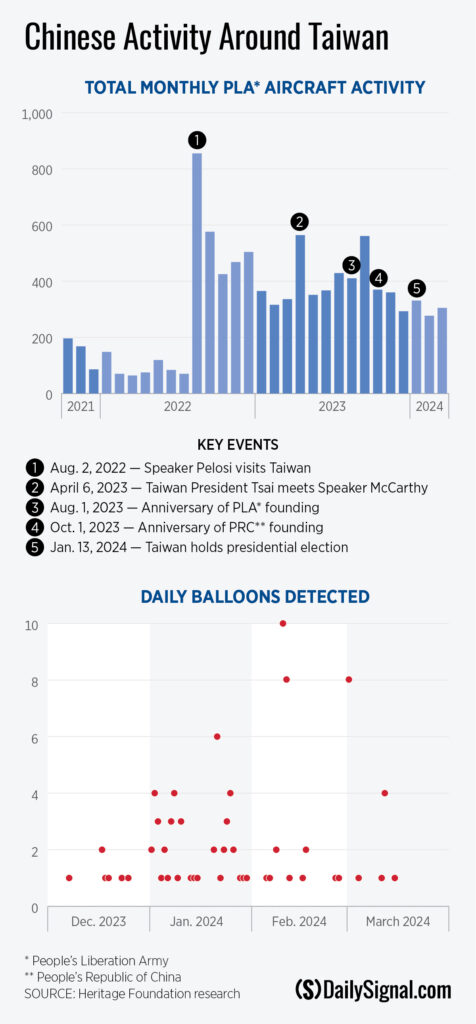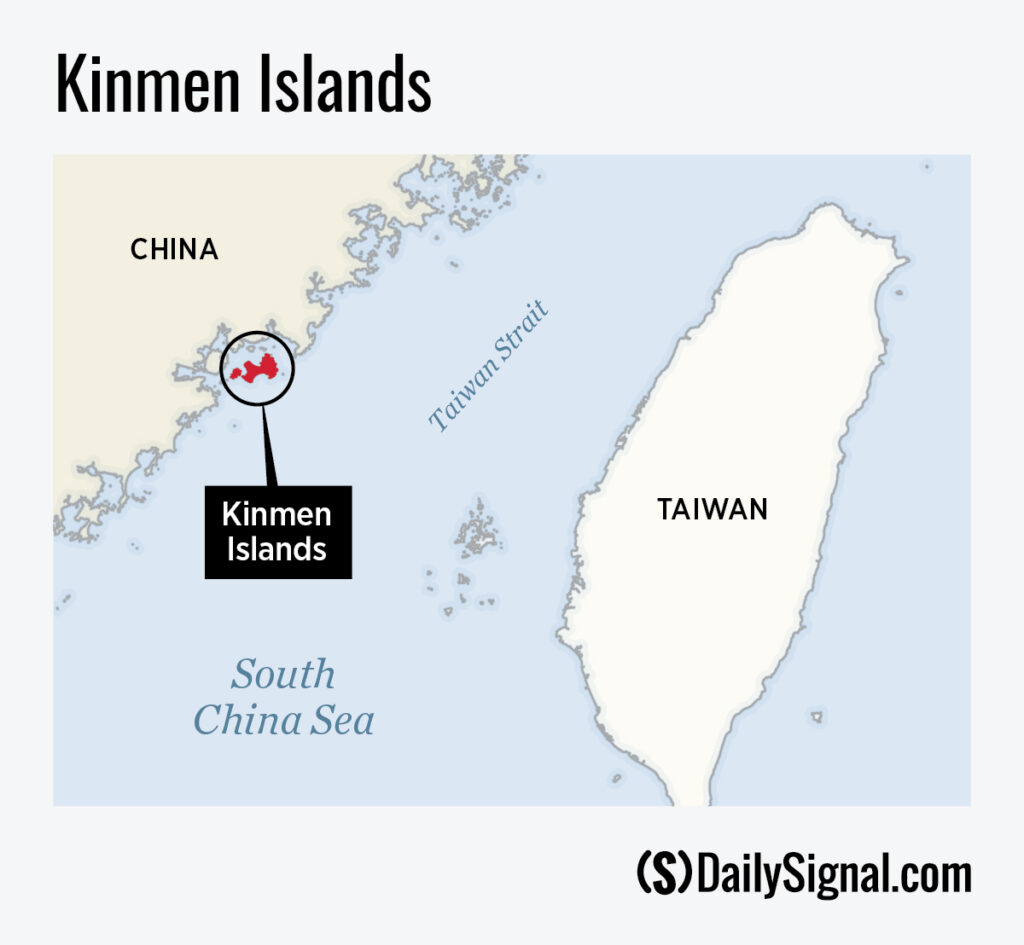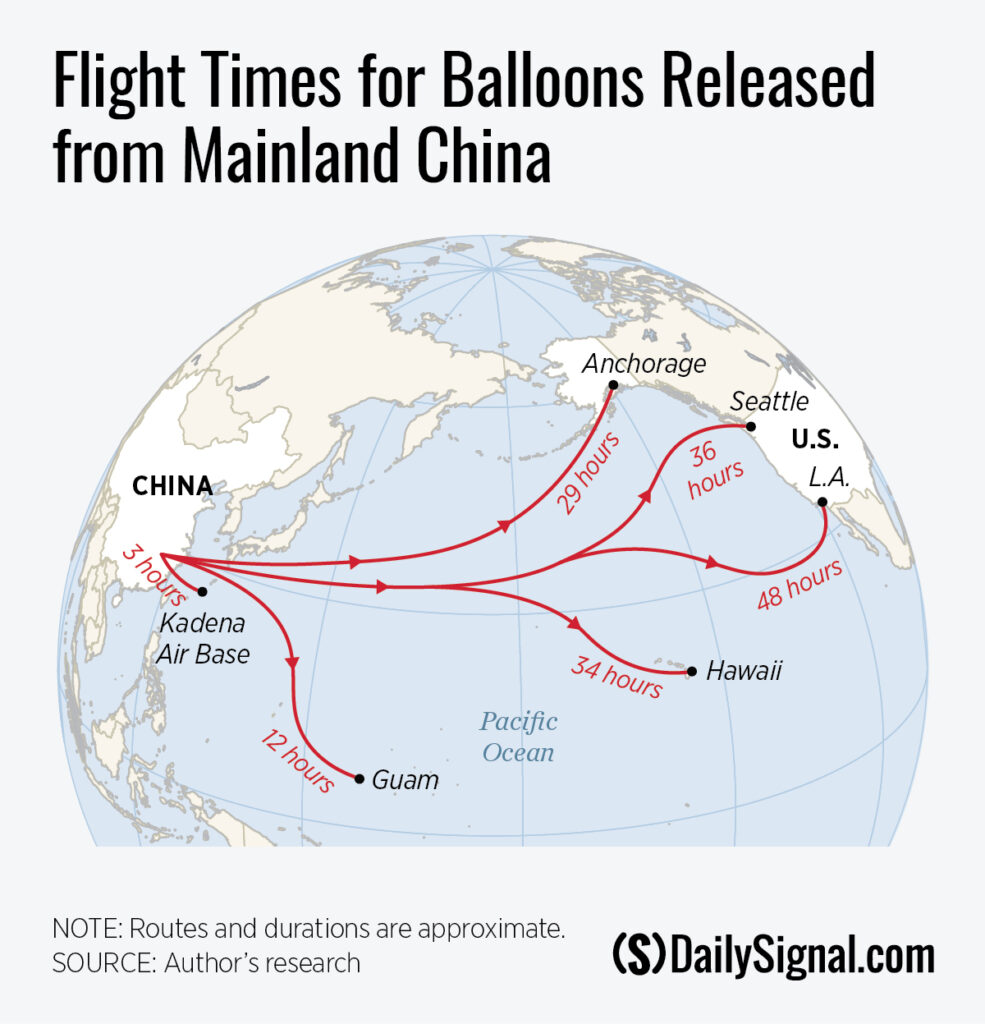In Chinese leader Xi Jinping’s New Year’s address, he described “reunification” with Taiwan as “inevitable.” Two weeks later, notwithstanding the bullying, the island nation voted in the presidential candidate who was most critical of China, someone Beijing labeled a “destroyer of peace across the Taiwan Strait.”
In the weeks leading up to Taiwan’s Jan. 13 national elections, China undertook a notable drawdown in military aircraft incursions. The drawdown was well below recent levels, the drop was notable even after a congressional delegation visited in late February.
This new quiet should not be interpreted as a de-escalation, but rather a sign of a moderated approach.
>>> This is the fourth iteration (November 2022, May 2023, October 2023) of periodic reports published by The Daily Signal to address China’s intimidation of Taiwan.
The week of the Taiwanese presidential election saw the lowest sustained average of People’s Liberation Army aircraft from China in Taiwan’s air defense zone since activities peaked following an August 2022 visit to Taiwan by then-House Speaker Nancy Pelosi, D-Calif.
On the day of the election, no Chinese aircraft were detected in the airspace surrounding Taiwan, where at least nine a day had been routinely seen.
Warships of the Chinese navy followed suit and widely avoided Taiwan. This type of drawdown is uncharacteristic of China’s recent activities, which has relied on so-called aggressive “wolf warrior diplomacy” to press its goals.
The perceived calm continued through late February when Rep. Mike Gallagher, R-Wis., chairman of the House Select Committee on the Strategic Competition Between the United States and the Chinese Communist Party, led a congressional delegation to Taiwan.
Historically, delegations of congressional lawmakers or senior U.S. officials have sparked Chinese military demonstrations in the Taiwan Strait. Given the nature of the Gallagher delegation, it was noteworthy that the visit didn’t elicit more of a response.

Although aircraft and ships were not seen in large numbers over the Taiwan Strait, China expanded its arsenal of intimidation to include what are apparently surveillance balloons. Since Taiwan began to publish sightings in early December, a total of 94 Chinese balloons have been detected flying near the island. At least nine flew directly over Taiwan the week of the presidential election.
China then marked the Chinese New Year on Feb. 10 by sending eight balloons, six warplanes, and four naval warships toward Taiwan[KM1] [SB2] , more balloons than were recorded on any previous day. These instrumented balloons fly at altitudes between 11,000 and 38,000 feet, an airspace used for commercial aircraft.
China has been silent about the purpose of these balloons, which spokespersons for the Chinese Communist Party call “weather balloons” while U.S. lawmakers and others call them “spy balloons.” Such incidents remind Americans of China’s invasive opérations last year, when a large spy balloon drifted across the nation before being shot down by the U.S. military.
While eyes were on the sky, tensions escalated at sea. Following then-Taiwanese President Tsai Ing-wen’s meeting in April 2023 with then-House Speaker Kevin McCarthy, R-Calif., China’s Fujian Maritime Safety Administration announced that it would begin inspecting ships in the Taiwan Strait, ostensibly for only a few days.
Recently, China has begun acting on that promise. In February, Chinese authorities boarded a Taiwanese tourist boat and harassed passengers. This came days after two Chinese fishermen drowned while being chased by the Taiwanese Coast Guard in “restricted waters.”
The perceived heavy-handedness of Taipei over the incident prompted some division in Taiwan. Both incidents happened near Kinmen Islands, home to thousands of Taiwan civilians as well as a military garrison.

Amid heightened tensions, Taiwan’s government changed how it reports the presence and activities of the People’s Liberation Army, or PLA. For years, the Taiwanese Ministry of Defense published a daily report on Chinese military aircraft and warships that crossed into Taiwan’s air defense identification zone or nearby waters.
Days after Taiwan’s Jan. 13 election, the defense ministry’s daily reports stopped including specifics such as aircraft type and detailed flight maps. When asked why the shift was made, the ministry responded: “We hope to let our country’s people understand the current situation we are facing as far as possible, without compromising the source of our intelligence.” That said, these daily reports are still important.
To keep an eye on tensions, the U.S. was operating the aircraft carrier USS Theodore Roosevelt on the South China Sea, accompanied by Destroyer Squadron 23. The destroyer USS John Finn transited the Taiwan Strait on March 5. A second aircraft carrier strike group led by the USS Ronald Reagan is nearby in Japanese waters.
What does this mean?
China’s drawdown in conventional military theatrics leading up to the Taiwanese election was calculated. But if the Chinese Communist Party hoped to coax Taiwan’s voters away from a more independent viewpoint, the effort backfired.
China’s use of relatively benign balloons failed to send a visible but nonconfrontational reminder to the island nation. In the end, the voters elected Democratic Progressive Party candidate Lai Ching-te as president—continuing in power a party despised by the Chinese Communist Party.
As mentioned, the United States is also familiar with Chinese balloons in our skies. The spy balloon that traversed the country last year, as well as the unidentified balloon discovered over Utah as recently as this month, now resonates in American minds.
It’s possible that the balloons floating over American airspace are the same ones released over Taiwan. One of these unmanned apparatuses released in China could reach the continental U.S. via the jet stream in days.

Balloons flying over Taiwan, like those floating over our homeland, surveil sensitive military installations throughout the Pacific and the continental United States. Whether these Chinese devices are intended to spy, monitor the weather, or simply intimidate, a Taiwanese problem has become an American one.
Opportunities for a crisis are just over the horizon.
Because of more ideal weather and operational conditions in the Taiwan Strait, mid-April is considered by many military experts to be a window for a hypothetical cross-strait confrontation between China and Taiwan.
The Chinese Communist Party historically has conducted high-end drills and wargames in the South China Sea in mid- to late summer. Exercises like these can quickly turn into more than that, warns the commander of the U.S. Pacific Fleet, Adm. Samuel Paparo.
Considering recent Chinese military advancements, Paparo said in February, “soon we’ll be at a point where a force sufficient to execute a profound military operation is in the field and operating under a fig leaf of exercise.”
Next month, Paparo takes over as commander of U.S. Indo-Pacific Command.
Lai’s inauguration as Taiwan’s president is set for May 20, likely an opportunity to pressure both Taiwan and the U.S. that China won’t miss. China’s slowdown of intimidation with aircraft and ships could be the calm before a larger, more serious military demonstration.
Despite this seeming lull, relations across the Taiwan Strait have been tense for months. China’s apparent draw-down of military forces and implementation of new tactics suggest that something is on Xi’s mind.
Taiwan and its neighbors should be vigilant for a return to increased military posturing and threats from China. This isn’t the sound of the sea settling, but rather a calm before the storm.

























